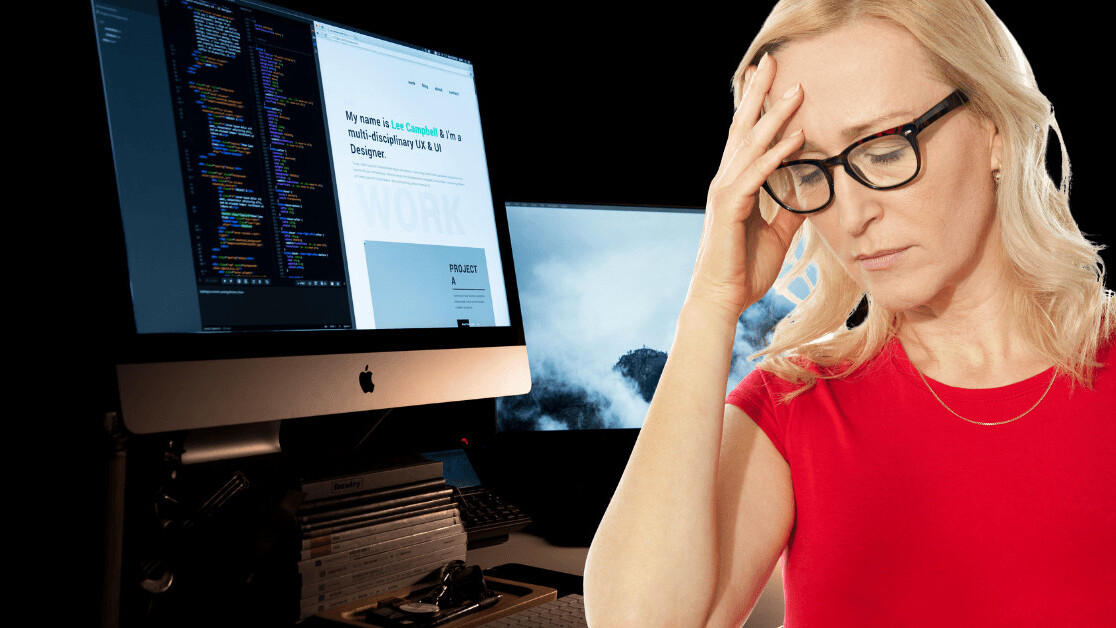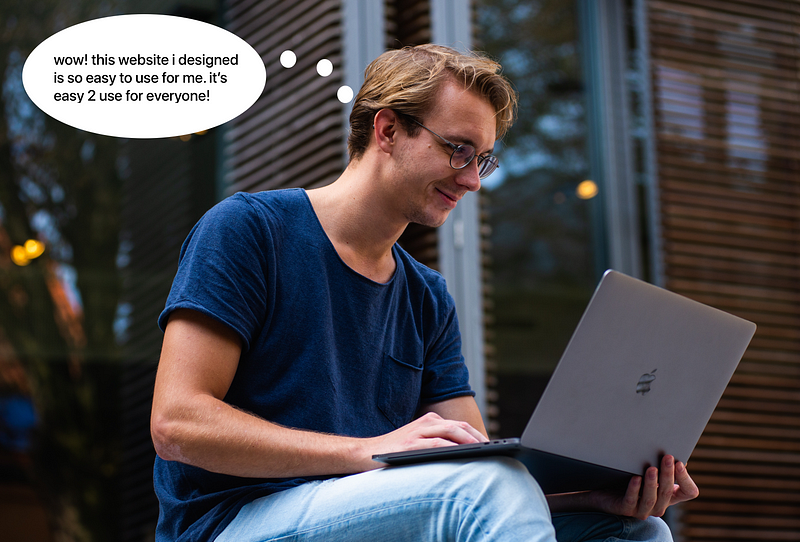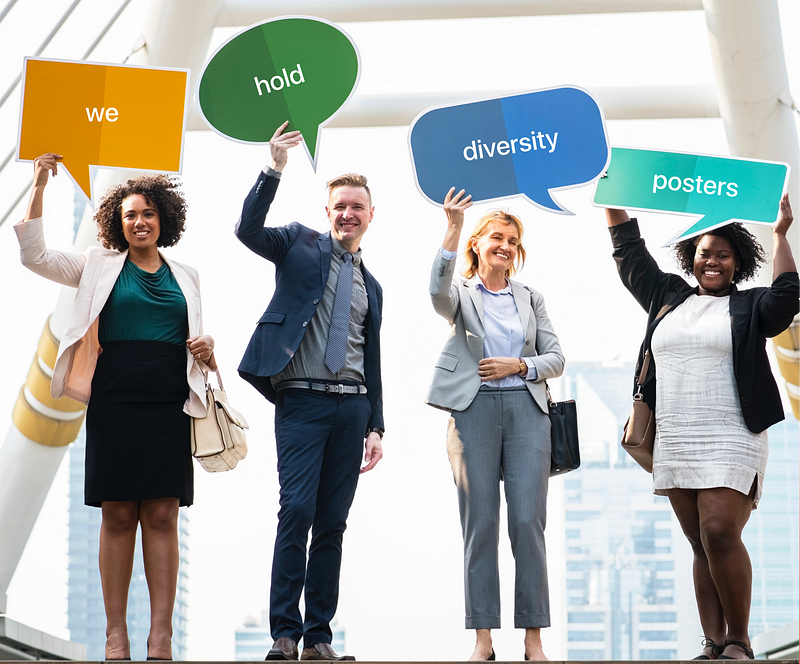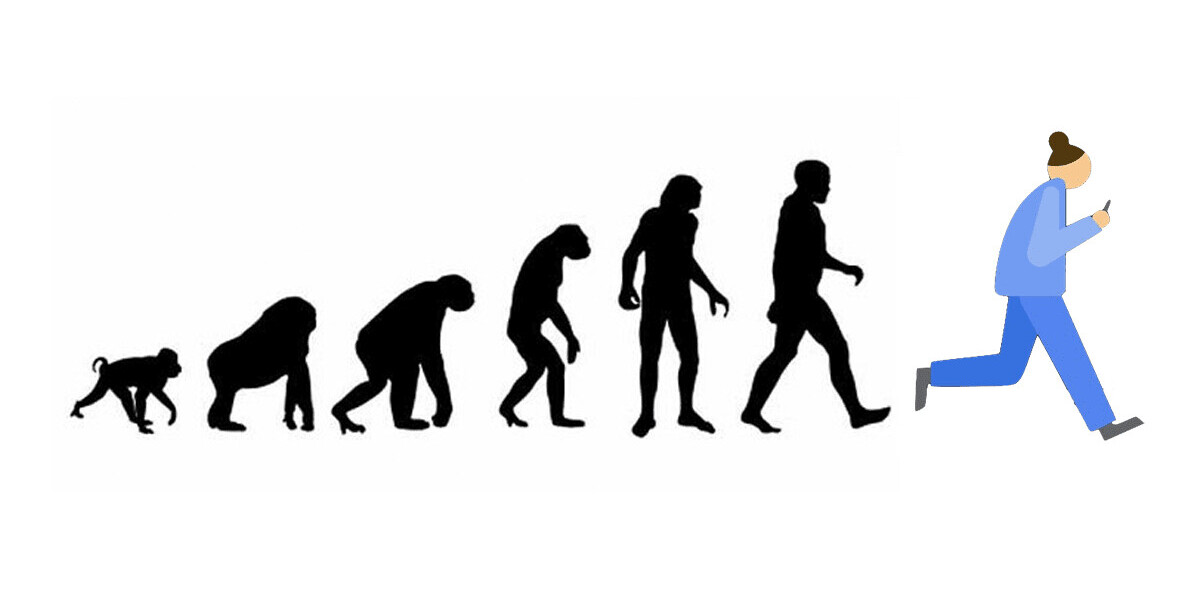
I remember listening carefully to the presentation on the redesign, trying hard to bite my tongue and keep my comments until the end. I was still shy, I still felt new, and I was battling a serious case of imposter syndrome. It was probably a dumb question, anyway. I shouldn’t ask it.
Easier said than done. I felt the question permeating through every fiber of my being, reverberating in my mind until it was the only thought I had.
“Did you get anyone else’s insight on this project? Was it just you all? Have you considered how that might be limiting at all?”
For about three seconds, I was relieved that someone asked this question. Then, I realized that person was me. Six white faces turned to look at me inquisitively. One woman, who looked extra offended, spoke next. She said a lot of things, but the crux of it was a lesson in what it means to be a designer.
“Design is about putting yourself in the shoes of your user… that’s what being a designer is all about — human-centered design.”
Some context — this very homogeneous team of designers was working to solve one of the most significant challenges of our era: redesigning the online immigration system, namely the process by which people apply to become citizens of the United States. I can’t overstate how important it is to design this properly: it can singlehandedly skew one’s ability to be successful in this world.
Because their users? Terrified, non-English speaking immigrants with everything on the line. Families who don’t know the difference between a usability test and an interrogation. Mostly brown people. Mostly Spanish speakers. And many haunted with stories of separation, deportation, and devastation. I don’t need to remind you of the demographics of the designers in the room.
How could this group possibly believe the idea of human-centered design was enough of a qualification for them to design for a demographic so far removed from their own experiences without at least acknowledging this massive gap?
Especially for a demographic whose fate depended on it?
#ffffff privilege
As designers, we find ourselves challenged by the need to understand most of our users. But what about those who rarely make it in the most bucket? The ones our affluent lifestyles tend to shield us from?
What about the single mom of three in Indiana, working two jobs to make ends meet, who just needs a to-do list app that she can access on the go? Or the young Black boy in Sanford, hesitant to don the hoodie your site is selling after he saw what happened to Trayvon Martin? Or maybe the dyslexic girl in El Paso, TX, who spends her evenings after school trying to learn English on the website you designed? These users often (and unfairly) carry the burden of using a product that was never designed for them in the first place.
Lucky for them, you, the designer, swoops in, ready to solve these problems and empathy the hell out of them. You, like most designers, are often white, often conducting remote testing, and often too divorced from the environment that led the user to need your product in the first place to understand it. Your clipboard is in hand, your sterile, templated usability test is ready, and you begin checking task-success rates, speed of completion, and general comprehension.
If marginalized users I mentioned above even make it to the usability test— which they often don’t — well, then, you tell yourself it’s okay that they hesitated, didn’t understand, swiped instead of scrolled, and missed the CTA you and your team carefully architected for their eyes.
Every test has its outliers. And outliers don’t matter. Right?
Why does any of this matter?
It matters because a recent study showed that Americans spend an average of 10 hours a day looking at their screen. It matters because as designers, we are the architects of an experience that matters just as much as (if not more than!) the one we live and breathe.
We see it in the kids who learn how to swipe, pinch, and scroll before they learn how to turn the pages in an actual book, in the hands that forget the sensation of picking up a pen to write and can never seem to find paper nearby to jot an idea down on (who needs paper anymore?), and in the 13-second elevator ride that is too excruciating to experience without checking our five-inch digital anchors for a dose of excitement, validation, and distraction.
Our new realities fit into tiny screens and laptops, our emotions reduced to 30 variations of the heart emoji in iMessage, our entertainment reduced to Netflix, our conversation reduced to Twitter, our human connection reduced to Facebook, and so on. Even our meditation to get a break from it all happens on Headspace. Designers quite literally get to decide how we process everything from grief to hunger, and what people decide to do about it.The way we access information is rapidly changing, yes, but the way we process is changing alongside it.
There is, then, inherent and undeniable power and privilege in being able to shape these experiences for the rest of the world.
An article by Aarhus University says it best:
Design is an act of power, or a potential act of power; that is, how design stages people’s agency, the structures that impact people’s agency, and how designed objects themselves seek to perform agential power… designing (re)configures agency through the relations between the designer, the designed object, people and the context… Whether aware of it or not, designers bring values and belief systems into the design practice based on their position in the world, and this influences the design in a particular way. Arguing that designers influence their design is not a controversial argument to make, but when design deliberately engages with power, social change, and the political condition, it seems increasingly important that designers critically reflect on their agency and position.
Rethinking human-centered design
The woman in my story used human-centered design as a crutch to support her reasoning for why any person should be able to easily design for another’s (vastly different) experiences. She was able to do so because HCD is based in a word designers seem to throw around more and more these days: empathy. Taken to the extreme, if you believe you have enough empathy, no two people are too different — meaning you can design for anyone.
You could even design for someone you know nothing about because our baseline assumption is that human beings are fundamentally the same. And as I was reminded by a mentor today, cognitively, we are. We’re all more or less subjected to the same ergonomic and cognitive constraints.
But human beings are fundamentally different, too. Designing for shared experiences pre-supposes that most or even all experiences are shared, when they are often intrinsically different. While problem statements can be ubiquitous—“How do we fix our cities? How do we increase productivity? How do we make healthcare accessible?”—we experience the solutions to these problems quite differently.
Is your grief-processing app acknowledging how different cultures, religions, and age groups handle sadness and loss? Is your travel app designed to include safety tips for women traveling alone? Does your note-taking app have settings for people who are visually impaired, or who may need to record voice notes instead?
Or, less hypothetically — if facial recognition is making it easier for us to use our phones, does it recognize faces with darker skin tones? When Nikon’s S630 cameras were released, did they assume all East Asians who were smiling were blinking instead? When Apple released the oximeter feature on its Apple Watches, why didn’t they work on people with dark or tattooed skin? (Could it have anything to do with the fact that Apple tests its products with its executive team, the top 10 of whom are all white?)
True implementation of human-centered design practices ensures designers are focused on how we are different just as much as on how we may be the same. These differences allow us to design for everyone by designing for accessibility, internationalization, varying levels of tech literacy, socioeconomic status, race, gender, sexual orientation, and more.
Where does that leave you?
The responsibility of all designers
Can you design for someone you don’t know? You can, you have, you do, and you will. That part of designing will never go away. We have the real privilege of being able to help facilitate people’s lives the way we do.
But in the immortal words of Uncle Ben, God rest his soul: “With great power comes great responsibility.”
Knowing what we know about how little we know, it is our responsibility to constantly force ourselves to be introspective about the lens with which we observe the world, especially our users. It is our responsibility to approach the problems we have been appointed to solve with the humility they deserve, by acknowledging first and foremost that our perspective is as limited as the experiences we were afforded.
It is also our responsibility to consume information that challenges what we believe, to regularly check both the assumptions and the privileges that shape the products we build every day, and to meet our users where they are.
It is our responsibility to actively seek the “outliers” that seem to be shrinking data points in the metrics that define our work — data points that are often representatives of entire populations who never seem to make it to the whiteboard as a compelling enough reason to alter a design.
Most importantly, it is our responsibility to create diverse teams that are able to truly relate to, empathize with, and understand marginalized users. It is here that change will truly take root, and design will truly begin to not just be human-centered, but all-humans-centered.
I’ll leave you where Brian LaRossa left me in his brilliantly crafted essay on privilege in design:
It matters whom we observe. It matters how we imagine. It plots a course through the design process, a path that is wrought with consequence. If we only observe and imagine those who resemble ourselves, then what we call empathy is merely introspection. The majority of designers are white. There is a privileged ouroboros of customer empathy that leaves so many others out of the loop. Awakening to privilege is often framed as an irreversible process — like biting an apple. But “woke” is not a permanent state for those of us in the majority. Privilege is a poppy field. It’s impossible to witness the way your own snoring prevents others from sleeping. Still, we have an obligation to wrench our eyes open again and again, an obligation to look inclusively (not just internally), an obligation to empathize with the whole audience and imagine them with care, and an obligation to be sensitive to the margins around us. If we don’t succeed in holding ourselves responsible for meeting these baseline obligations, then the things we design will only serve to keep others like us asleep.
“The Dreamers will have to learn to struggle themselves, to understand that the field for their Dream, the stage where they have painted themselves white, is the deathbed of us all.”
— Ta-Nehisi Coates
Hareem is a San Francisco-based product designer at Segment working on Personas, a product built on the Segment platform that helps companies better understand and take action on their customer data. Previously she worked in D.C. as a UX Consultant, where she worked on federal, commercial, and non-profit projects. She is passionate about design for good, Taco Bell, and really bad dad jokes.
Get the TNW newsletter
Get the most important tech news in your inbox each week.









